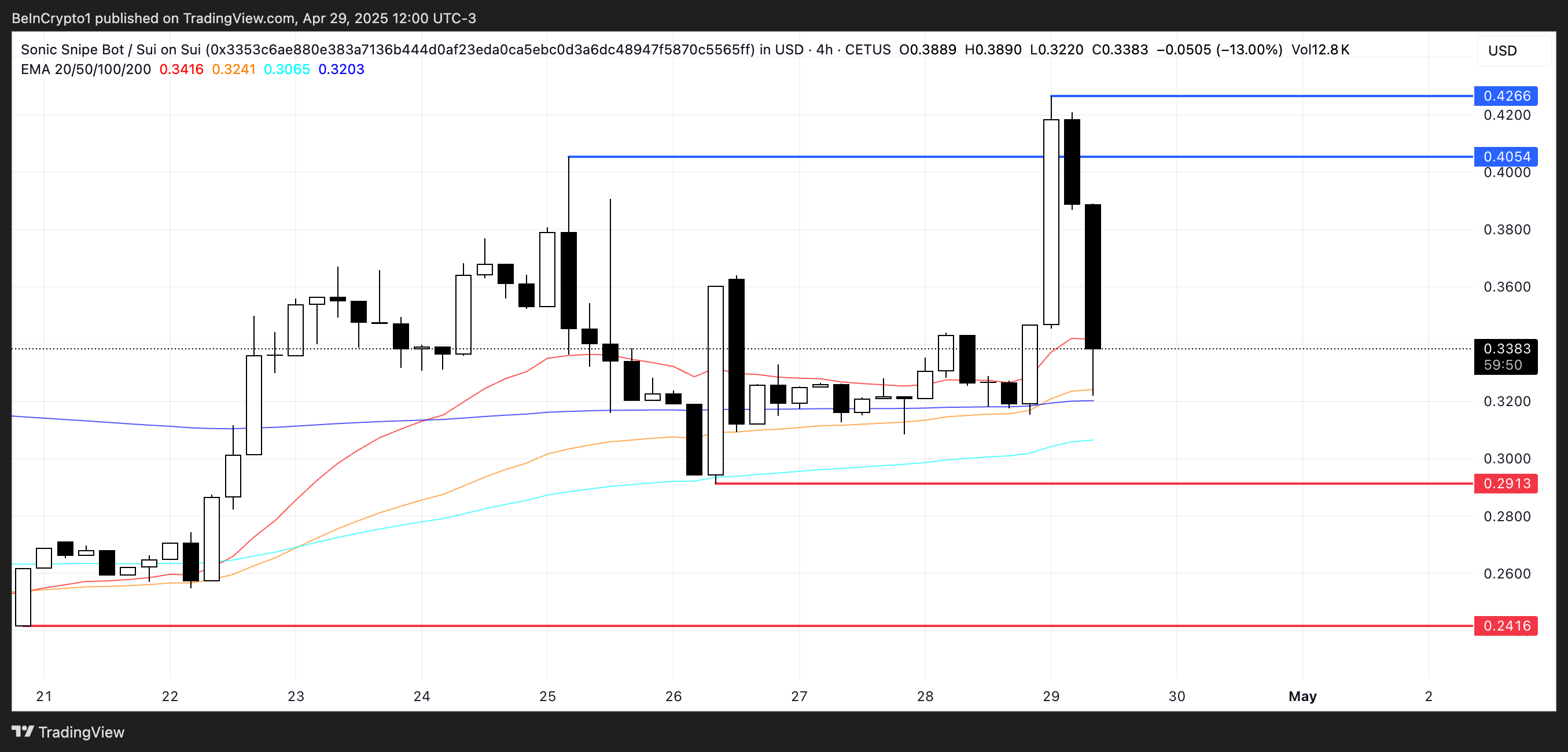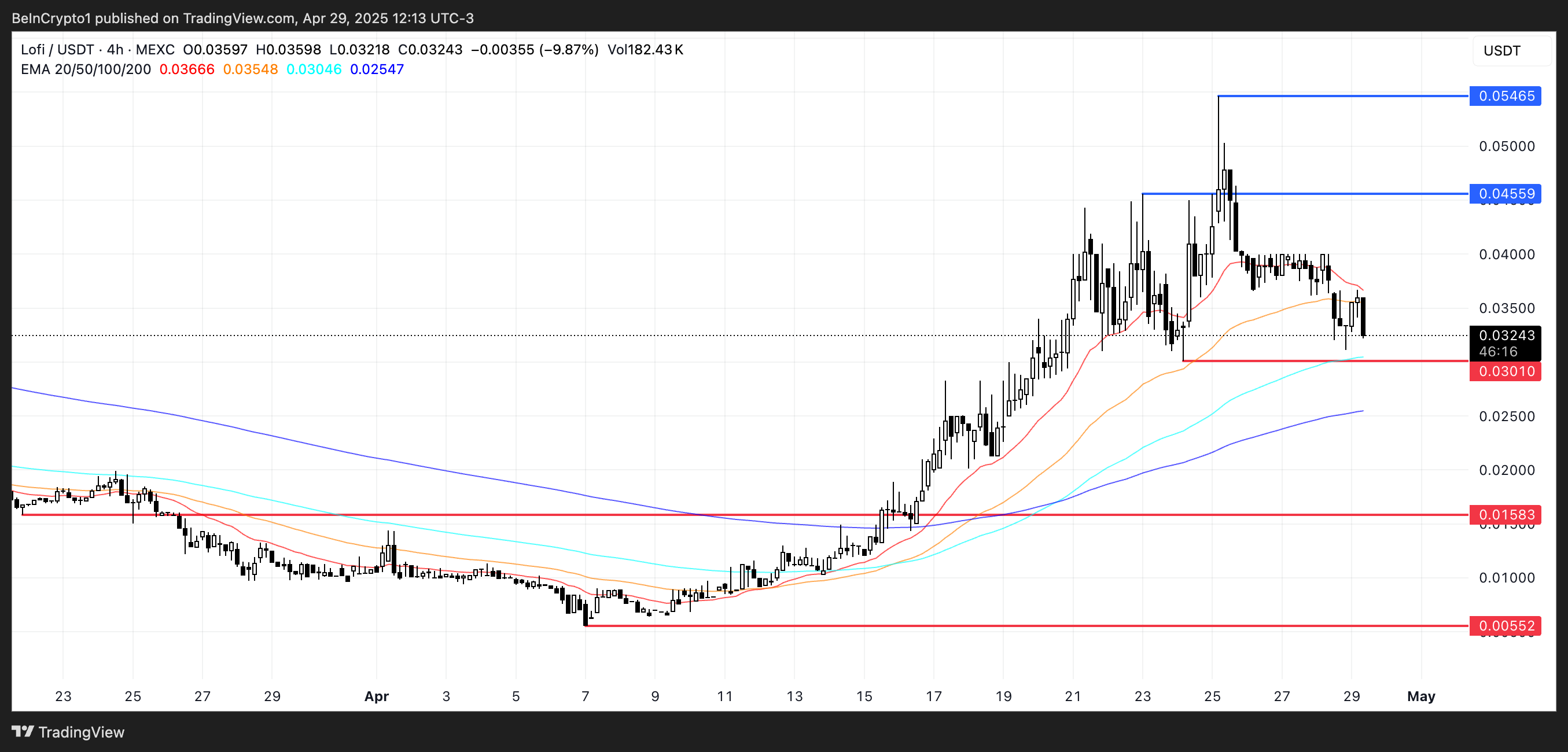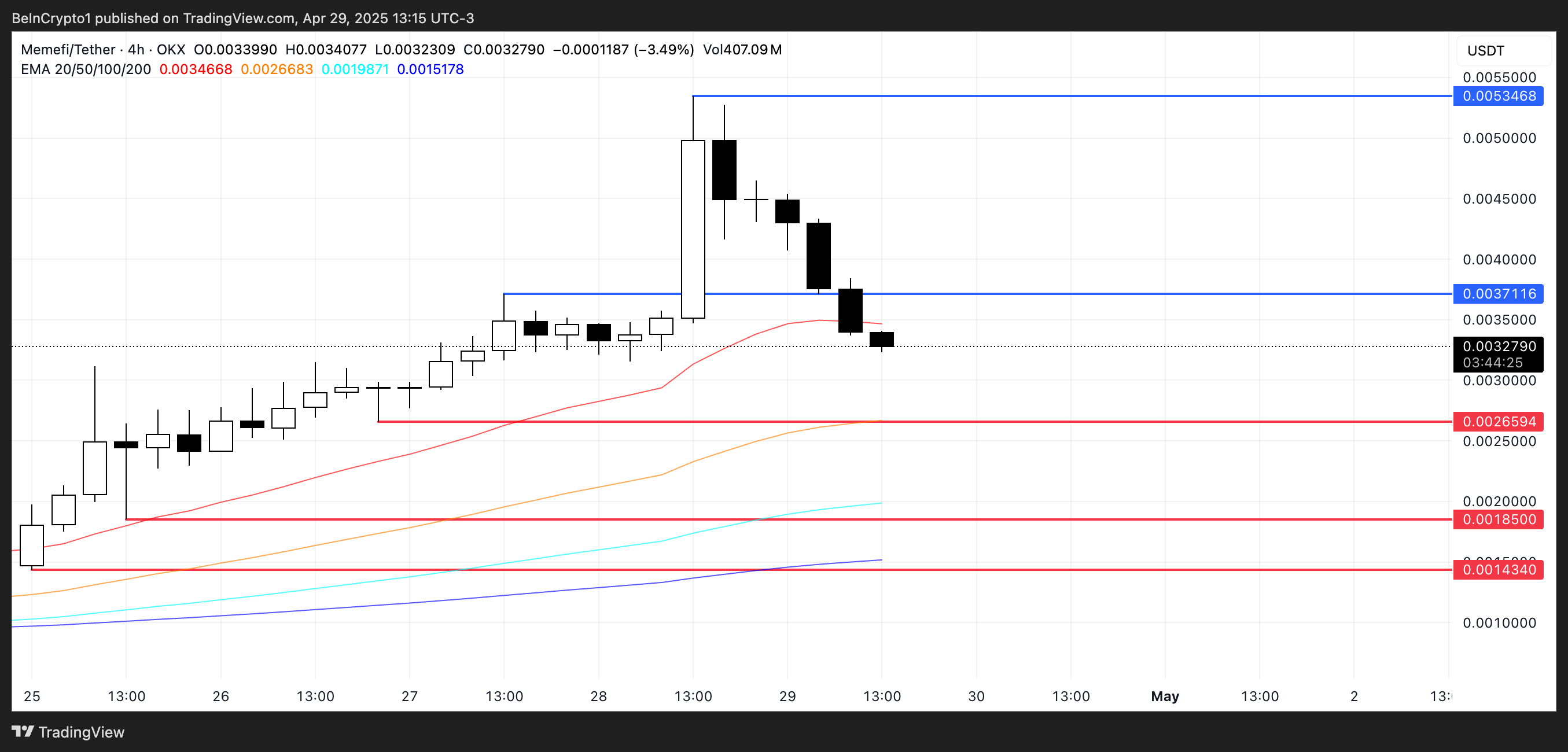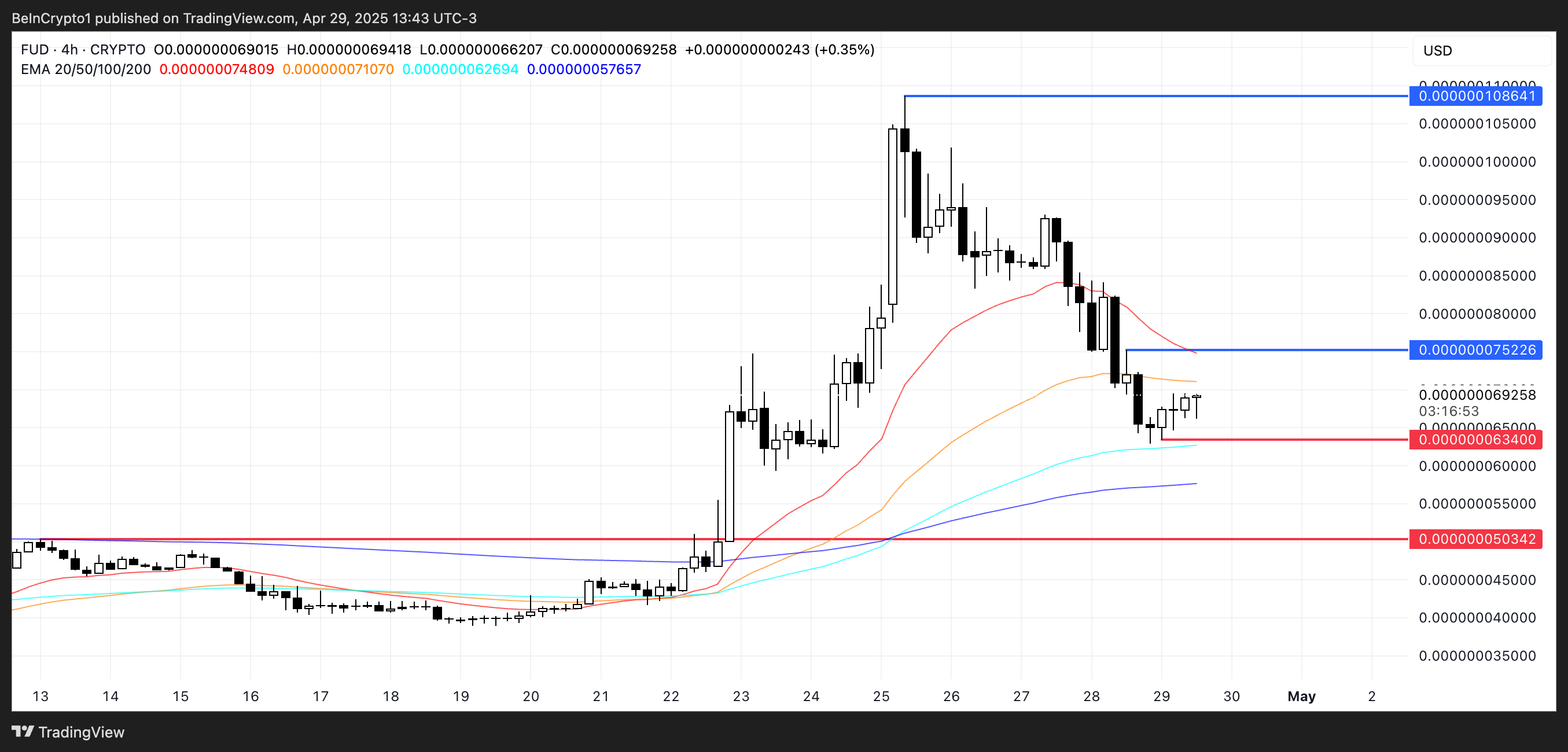SUI meme coins are gaining major traction as the SUI ecosystem continues to strengthen. SUI DEX volume has surged to $3.8 billion over the past seven days, up 74%, making it the fifth-largest chain by decentralized trading volume and surpassing Arbitrum.
As interest in SUI grows, top meme coins like Sonic Snipe Bot (SONIC), LOFI, MEMEFI, MIU, and Fud the Pug (FUD) are showing a mix of strong momentum and key technical tests. The next few days could be crucial in deciding which tokens emerge as leaders in the fast-growing SUI meme coin space.
Sonic Snipe Bot (SONIC)
Sonic Snipe Bot is an automated trading tool built for lightning-fast trade executions. It is fully integrated into the Telegram application and stands out by offering support for 31 blockchain networks, including Sui, Ton, Injective, Solana, and Tron.
Sonic Snipe Bot also supports all major bonding curves, such as Movepump on Sui, making it a flexible and powerful option for traders looking to operate across multiple ecosystems without leaving Telegram.

Over the past seven days, SONIC, the native token tied to the bot, has surged by 27%, pushing its market cap to approximately $1.7 million. If positive momentum continues, SONIC could rise above the $0.40 mark and potentially challenge the $0.426 level.
However, if the trend reverses and selling pressure builds, the token could fall back toward $0.29, and in a stronger downtrend, even $0.24 could be tested.
LOFI
LOFI is one of the biggest meme coins on the SUI blockchain, built around the theme of a Yeti character. Despite its strong brand and visibility, LOFI stands out for a less positive reason this week—it is the only token among the top 10 SUI meme coins that is down over the past seven days.
This relative underperformance could indicate weakening investor interest compared to its peers, or it could present a potential rebound opportunity if sentiment around SUI meme coins remains strong overall.

LOFI continues its push to become one of the most recognized meme projects on the SUI blockchain. If momentum recovers, LOFI could rise above the $0.045 mark and potentially challenge $0.054 in an extended rally.
However, the $0.030 support level remains critical. A break below this zone could trigger a steeper decline toward $0.0158, and if selling pressure accelerates, even $0.0055 could be tested.
MemeFi (MEMEFI)
MEMEFI is a Telegram-based game and Web3 meme universe that claims to have more than 50 million players worldwide. It has quickly climbed the ranks and is now the second-largest SUI meme coin by market cap, currently at $35 million.
This marks a sharp pullback from its peak of $51 million reached just yesterday, reflecting the recent correction underway.
Despite the decline, MEMEFI is still up an impressive 353% over the past seven days.

If MEMEFI can regain its bullish momentum, it could first aim to break above the resistance at $0.0037. A successful breakout would open the path toward $0.0053, potentially extending its rally.
However, if the ongoing correction deepens, the first major support to watch is at $0.0026. A break below that could push the price further to $0.00185; if selling pressure intensifies, even $0.00143 could come into play.
MIU
MIU is currently the biggest meme coin on the SUI network, boasting a market cap of $68 million. Its price has climbed 16.7% over the past seven days, reinforcing its leadership position within the growing SUI meme coin ecosystem.
MIU is by far the largest meme coin in this space, with no close competitors matching its size or visibility. As the broader SUI ecosystem gains momentum and attracts more attention, MIU could continue to benefit from the overall surge in interest.

As the dominant player, it stands in a strong position to ride the next wave of growth if the trend across SUI meme coins remains positive.
If the positive momentum around MIU continues, the token could rise to test the $0.000000080 level, marking a new short-term target.
However, if the trend weakens and selling pressure emerges, MIU could first fall toward support at $0.0000000689. A deeper correction could even push the price down to $0.0000000599.
Fud the Pug (FUD)
This one is another meme coin aiming to carve out a leading spot in the growing SUI meme coin ecosystem. FUD currently holds a market cap of $3.8 million, down from its peak of $5.9 million just two days ago.
Despite a nearly 5% drop over the last 24 hours, FUD remains up an impressive 41% over the past seven days, highlighting strong underlying momentum.

Technically, FUD recently tested the support level at $0.0000000634. If this level is tested again and fails to hold, the next downside target would be around $0.000000050.
On the upside, if the current pullback stabilizes and momentum returns, FUD could rise to challenge resistance at $0.000000075. A breakout above that could pave the way for a push toward $0.00000010.
With dog-based meme coins often attracting outsized attention and hype, FUD could have a strong chance to expand its market presence if broader interest in SUI meme coins continues to grow.
The post Top 5 Sui Meme Coins to Watch for May 2025 appeared first on BeInCrypto.











